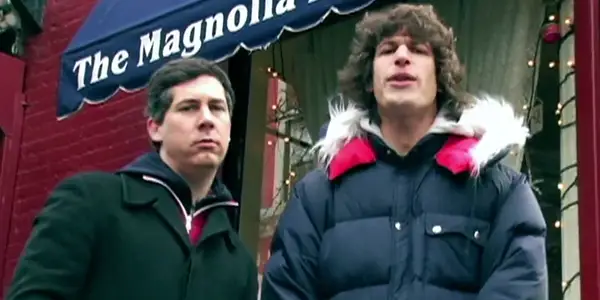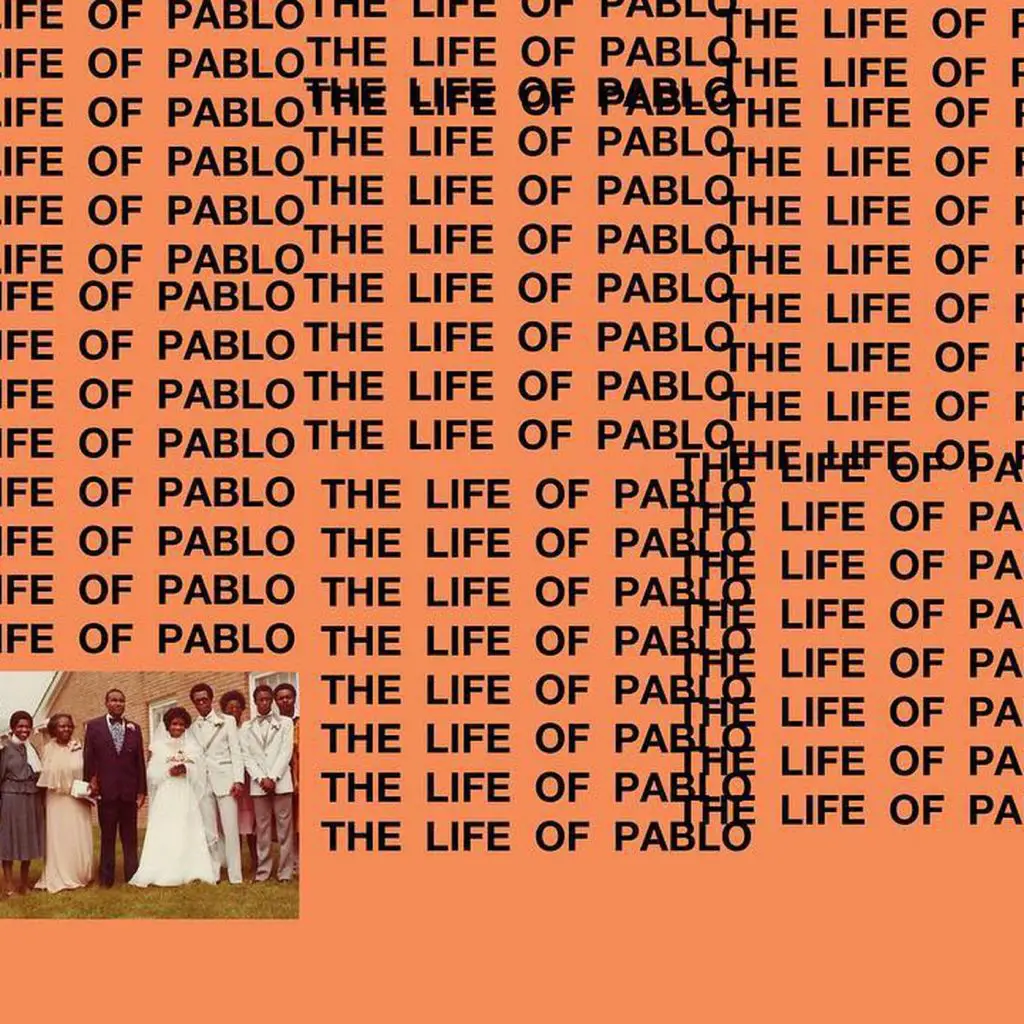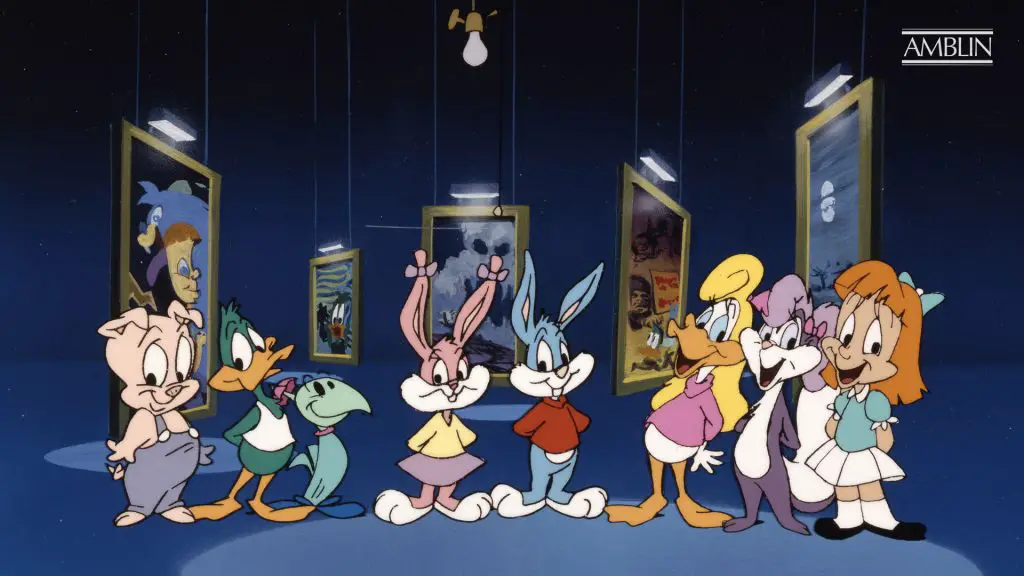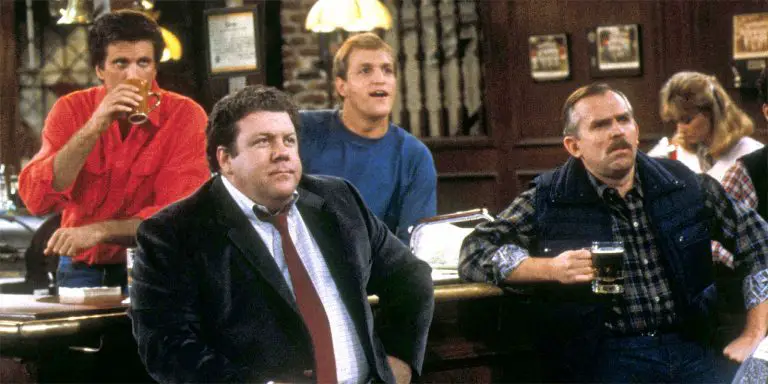A theory on why pop culture nostalgia will end with the ’90s, plus an announcement about a new project.
Lazy Sunday began the end of pop culture as we knew it.
On the December 17th, 2005 episode of Saturday Night Live, snuggled midway through an episode hosted by Jack Black — who was there promoting King Kong, a three-hour epic — was a three-minute comedy rap video. It wasn’t just an instant hit, it was an instant explosion. And a fledgling website called YouTube, launched roughly 10 months earlier with little-to-modest fanfare, became the go-to destination for bootleg streaming copies of Lazy Sunday.

2005 was well before every late-night comedy show (and, eventually, TV show) shared its best clips for free online; quite the opposite, in fact. NBC didn’t exactly embrace the viral hit they had on their hands. Instead, they entered into a game of whack-a-mole with YouTube, frantically trying to squash the shared copies of Lazy Sunday. But like the heads on a hydra (yes, we’re switching from a whack-a-mole analogy to a hydra analogy, that’s not poor writing, I’m just living my life a quarter mile at a time), when one copy would go down, three more would take its place.
Lazy Sunday now gets a deserved chunk of credit for putting YouTube on the map. The video also put a number of other things on the map (or, at least, amplified them): Andy Samberg; his Lonely Island troupe; comedy rap that takes production and performance seriously; the start of SNL‘s, and much of televised comedy’s, evolution into a focus on individually-sharable video clips; adults going to see The Chronicles of Narnia.
But I’m going to focus here on a more conceptual piece of shrapnel the from Lazy Sunday detonation: The end of collective pop culture experiences. As Lazy Sunday ushered in the beginning YouTube era, it sparked the conclusion of the feeling of “you gotta watch this live or get left behind.” Sure, in the past few decades people had recorded shows on VHS and then on TiVo; but now, someone who hadn’t could also witness something they’d missed in real time. Gone were the need for collective moments. We could now have whatever pop culture experience we wanted, and if there was a can’t-miss moment somewhere else, we could always watch it on YouTube. Or not. There was always something else to see, after all.
So it was fine that the TV medium, over the next decade-and-a-half, would grow to untenable proportions (532 original scripted TV series in 2019, more than double the number in 2010). Very few of them captured even a sliver of the broad strokes zeitgeist. If one did — a Stranger Things type — scores of people would mentally add it to their personal to-watch list, and maybe (or maybe not) eventually binge it, at their own pace, on whichever of the borg of streaming services happened to have its streaming rights. (And this isn’t even getting into other competition for eyeballs like YouTube and TikTok stars. They have an entire eyeball hoarding subgenre.)
The rest of pop culture took the same path as TV: Endless niche choices. Music became impossibly broad, and as CDs and then mp3s of both the legal and illegal flavors gave way to the streaming services, giant, four-quadrant musical hits became as rare as giant four-quadrant TV hits. Traditional, tenable music releases were gone. The biggest artists in the world would release surprise albums at midnight, put new singles on Soundcloud — Kanye West even released an album on a streaming service, then went back to do more editing of the tracks and re-released them. (In the digital world, all things are mutable — it’s also why today’s video games receive post-release patches and updates that didn’t exist in prior eras.)

The literary industry was flipped upside-down, as self-publishing pushed the number of titles a year into the hundreds and hundreds of thousands. Another Harry Potter-sized phenomenon seemed, and seems, unlikely — not because another author couldn’t create an immersive series like that, but because everyone’s reading needs are being so super-served that there’s little need to take a chance on a book that’s even a tiny genre step away from exactly what you like.
Movies took an oddly different approach; rather than pumping out more movies than possibly imaginable, the legacy studios downsized. They stopped trying to hit singles and doubles and even home runs and only went for Rock-and-Jock 20-run grand slams, producing fewer movies with larger budgets. In an effort to mitigate the riskiness of those huge bets, they began almost exclusively making movies on proven intellectual property (sequels, remakes, reboots, adaptations, spin-offs). Smaller niche movies returned late in the 2010s, now mainly produced by the streaming services that hungered for more original content. But, much like everything else discussed here, they were hyper-targeted at certain demographics. They were niche products, borne largely from predictive algorithms of what a subset of people would want to watch. There are hundreds of original movies that Netflix has produced but never promoted to me; the data says I want to see Kevin James as a shlubby international spy, so Kevin James as a shlubby international spy is what Netflix is going to keep shoving in my face until I relent. (Note: I did not particularly enjoy the Netflix movie with Kevin James as a shlubby international spy when I finally gave in.)
This is all to say: Collective pop culture is more or less dead. And collective pop culture is what creates generation-wide nostalgia.
Sure, there will be blips on the radar here and there. There’s the occasional Tiger King or Game of Thrones, the record-breaking Avengers: Endgame, the Hunger Games book series, the genre-traversing Old Town Road. But there’s nothing that captures the full attention of the zeitgeist. (Well, other than a global pandemic. That has a Q-score off the scale.) Odds are, of those five pieces of pop culture I mentioned in this paragraph, you skipped at least one.
And that is why the 1990s are the final decade that will inspire deeply passionate, deeply powerful nostalgia.
The ’90s were a time of collective pop culture. There were just a handful of networks producing original shows, and you basically watched their offerings in real time. (Who could trust a VCR with something as crucial as Evening Shade? WHO!?) If you missed something, there was no going back to watch it — not unless the network aired a re-run or you found a friend who’d taped it. Letterman? Had to watch live. Super Bowl commercials (and/or the Buffalo Bills blowing a Super Bowl)? Had to watch live. Awards shows, sporting events, Diane Sawyer interviews, disgraced football stars in police chases, cartoons for kids, sitcoms and dramas for adults. Had to watch live.

The must-watch aspect of ’90s programming (I mean, there was literally a block of shows that NBC marketed as “Must See TV”) didn’t just place a generation of people all on the same pop culture wavelength. Because there was no instant replay outside of summer reruns for a handful of shows, no YouTube, no instant access to re-watch or re-listen, the memories of those moments had time to marinate, to grow in people’s minds, to become legends. Because there wasn’t much of a mainstream Internet, there was no way to see millions of people’s instant hot takes on anything and everything. (Quick shout-out to the people who used to put up with a very young version of me on the Usenet boards, though, spouting pre-pubescent nonsense about pro wrestling and video games in the pre-America Online ’90s. Back then, people gave the immaturely provocative online comments of a middle school kid the right amount of weight.)
There was less of everything in the ’90s, not just pop culture. Shopping was funneled through the malls and local stores. For kids, toy stores were the one and only place to be — now, there are barely any toy stores left, and the biggest one did so poorly it went out of business. News went through the local newspaper, through magazines, through reputable national news sources. There were no screaming white nationalists on cable “news” warping collective reality and melting senior citizens’ brains. There was just… news. The way to discover music was on the radio, or by listening to something cool from a friend or on the recommendation of a record store employee. Then the way to listen to that music some more was to either buy it, or tape it off the radio. And on it goes. Video games. Cartoons. Books. Websites. Fashion choices. Brands. (Today, for example, we have at least 175 companies that just make direct-to-consumer mattresses.)
Even when the Internet did begin to become a mainstream “thing” in the ’90s, the overwhelming majority of people took their first steps online in the same way: Through one of the infinite 3.5-inch floppy discs or CD-ROMs that America Online mailed to your house. “You got mail” became a culture-wide catchphrase.
It’s reductive to solely chalk up ’90s nostalgia as the product of “lack of options” and “less technology,” although I certainly think those are major reasons. Plenty of other factors had their place as well. The ’90s happened to be a Florence-in-the-Renaissance consolidation of some of the world’s best talents hitting their prime. The best comedians of the ’80s became the best sitcom stars of the ’90s. Hair metal gave way to grunge, hip-hop, and some of the most catchy pop music ever written. The NBA had the best collection of talent in its history — then put all of the best players (except Isiah Thomas) on one team and transformed the Olympics. Even wrestling peaked with Stone Cold, the Rock, and the NWO. Things were good politically too, creating a modern era of good feelings, as billionaires were only beginning to hoard money, leaving enough around at the time for there to be a satisfied middle class, and both U.S. presidents during the decade were, at the very least, literate.
The ’90s were unapologetically garish — burning in your retinas and staying there forever. And for those of us who had our formative years in the ’90s — well, since then, we’ve had 9/11, endless wars, the Great Recession, the rise and mainstream acceptance of anti-intellectualism and hate, the worst polarization of America since the Civil War, wealth inequality and racism both at seismic event levels, and a once-in-a-century pandemic. No wonder we want to retreat to the days of asking our friends if they tried the Arch Deluxe or watched Pinky and the Brain.
Nostalgia can be easily dismissed. South Park‘s concept of “member berries” — the addictive, fruitless (pun intended-ish) escape into nostalgia — has a strong underlying truth. The word “nostalgia” even evokes a Simpsons quote for me, as Homer picks up a toy in a retro toy store and says, “Ah, pointless nostalgia.” (Am I nostalgic about that episode and, therefore, in an endless fun house mirror of nostalgia? Discuss.)
But I believe there’s more to nostalgia than just: “Remember this thing from when we were kids? Wasn’t it great?” — the Buzzfeed “16 things only ’90s kids will recognize” take on nostalgia, if you will. Nostalgia for nostalgia’s sake. I believe the things we experience in our formative years are just that — formative. Not only do we look back on them fondly because of the rose-colored glasses that come with the standard trim package of our brains, we look back on them fondly because they inform how we live today. How we absorb information. How we absorb entertainment. How we interact with each other. How we are now adults, leaders, parents. How we work. How we see the world.
While this entire essay wasn’t initially intended to be a plug, I realized as I was working on it recently that it dovetailed into my “pandemic project” — so this seems as good a time as any to bring it out. As blogging (especially individual blogging) has changed, I’ve been looking for other ways to do some writing, share some thoughts, and re-build and re-grow a community. So I’ve decided to launch a spin-off to this website: A weekly newsletter called The Retro, where I’ll cover some of the biggest pop culture moments of the week from the ’80s and ’90s and look at them from the modern perspective. I’ll also cover all of the reboots and nostalgic throwbacks happening in modern times, plus give some recommendations for watching, reading and listening.
I hope you subscribe to the newsletter and enjoy!
SUBSCRIBE TO THE RETRO
A new weekly email newsletter from 11 Points!
